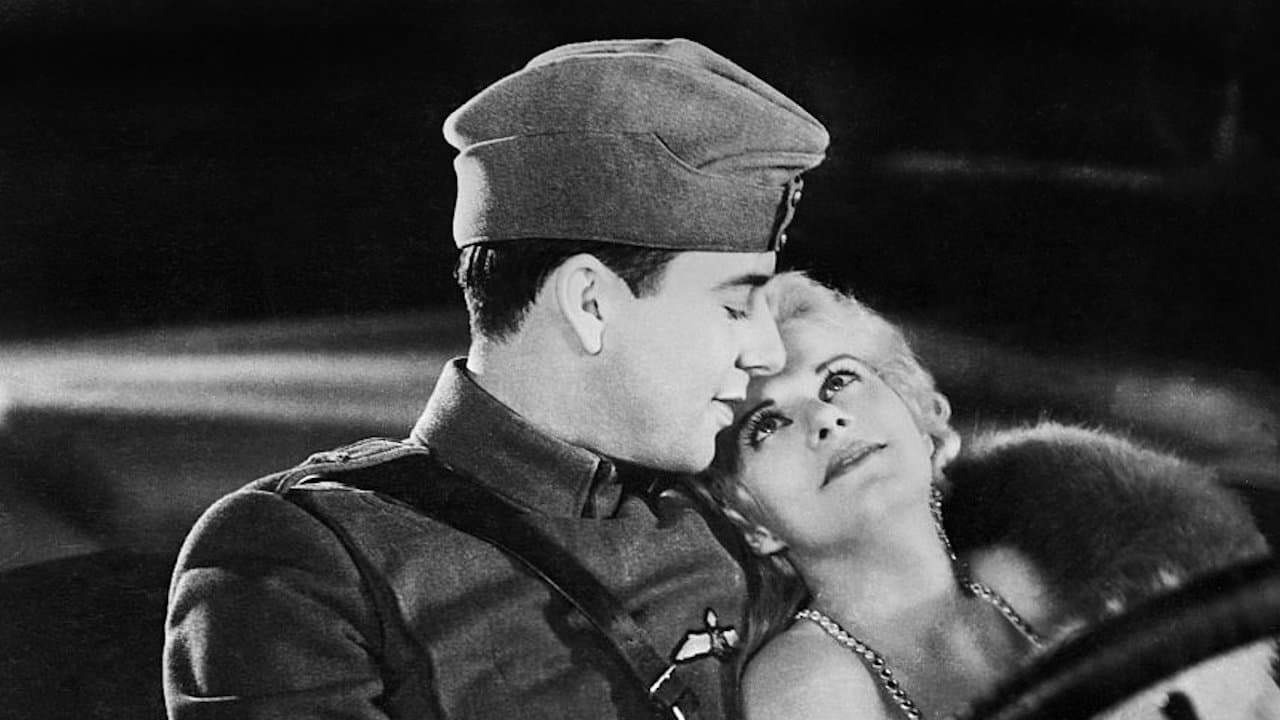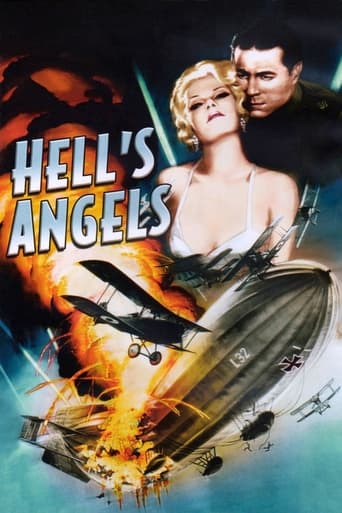

You won't be disappointed!
... View MoreTo me, this movie is perfection.
... View MoreBrilliant and touching
... View MoreA lot of fun.
... View MoreUsually introduced as an early action film, this movie has a surprising amount of depth and conflict among the characters. The bonds of brotherhood, romance, and questioning the meaning of life are much more prevalent factors in the film than war and combat. Created by the eccentric Howard Hughes with a notoriously eventful production period, one is blind-sided by the character development found within. Even today, over 80 years after it's production, the struggles of the characters are still relevant and I find myself relating to both brothers.Ironically, the action parts of this action film bring the entire picture to a screeching halt. Extremely early in action filming, the action scenes are difficult to follow and full of awkward camera angles. After a while, I lose track of who is shooting at who and become incredibly bored with the action scenes. Overall, not a bad movie. A great example of a decent film of the period, with a little bit of everything. Definitely worth a watch.
... View MoreHell's Angels is an war film starring Jean Harlow, Ben Lyon, and James Hall. The screenplay centers on the combat pilots of World War I. Originally shot as a silent film,it was retooled over a lengthy gestation period and it is now hailed as one of the first sound blockbuster action films.It was written by Harry Behn and Howard Estabrook; and it was produced and directed by Howard Hughes. Monte and Roy Rutledge are a couple of British brothers who drop out of Oxford to join the British Royal Flying Corps. Both have a romantic rivalry over the affections of the two-timing socialite Helen. While flying a dangerous bombing mission over Germany, the brothers are shot down. The commandant savors his opportunity for revenge. He offers the boys their freedom if they'll reveal the time of the next British attack.If they don't cooperate, they face unspeakable consequences. Roy, driven mad by his combat experiences, is about to tell all when he is shot and killed by Monte. The latter is himself condemned to a firing squad by the disgruntled commandant, who will soon meet his own doom at the hands of the British bombers.Two bright facets light up this 1930's aviation melodrama. One is the extraordinary footage re-creating World War I air battles and the other is Jean Harlow. Both are enough to offset the cornball story and stilted dialogue. The movie was almost three years in the making and with a budget of nearly $4 million,which was astronomical at that time,was the obsession of eccentric millionaire producer/director Howard Hughes. Apparently, the authenticity of the dogfight scenes was so important to Hughes that he piloted a plane himself, and ended up breaking a few bones in the process. More shocking, it's said that three pilots lost their lives making the movie. The sequence depicting an epic encounter between the British Royal Flying Corps and a German zeppelin is especially stunning, thanks to the eye-popping use of hand tinting. A bombing raid on a German munitions depot is also remarkably convincing. Overall,the movie maybe dated after more than 80 years but it remains enjoyable and entertaining due to the authenticity and the spectacular flying sequences in it.
... View MoreBrothers Roy and Monte Rutledge ditch their native Oxford for England's Royal Flying Corps at the onset of the First World War. One of the brothers (James Hall) is madly in love with a beguiling and attractive girl named Helen, played by Jean Harlow. Meanwhile, after the news that war has been declared on Germany, their German friend Karl (John Darrow) is ordered back to his country to enlist in the war and fight Britain; a sentence he resents on account that he considers the English his friends. Karl ultimately ends up on a Zeppelin (a German airship) with orders to bomb an area in London.As the story progresses Roy and Monte volunteer for a risky mission: to bomb a German munitions facility using a German plane. Before they commence to their duty however, Roy and Monte decide to enjoy what could possibly be their last night together and Roy goes off and looks for Helen, only to find her in the arms of another man. (Sometime in mid-1934, The Motion Picture Association of America (MPAA) drafted a document that set the standards on what was acceptable to be shown on motion picture screens. A lewd scene in the movie involving Helen and a drunken man is a fine example of pre-code behavior)."Hell's Angels" was really a movie ahead of its time. Howard Hughes, the director, wasn't afraid to do anything if he knew it would be beneficial to the picture, and cost certainly wasn't an issue because the results were sensational. The aerial sequences alone were convincing for its time, and even today, because it was achieved through the means of practical effects and obviously required an aviator's skill. The color sections of the film (the destruction of the Zeppelin in particular), were also well done, creating the right atmosphere for a highly elevated airship in danger of being compromised. And the sacrificing of the German airman falling down a darkened pit without even so much as a whimper was both frightening and unnerving; this scene is a sparkling example of how images can triumph over words. But what I found most wonderful of all in this film was an eight minute, two-strip Technicolor scene featuring Jean Harlow, the only color footage that exists of the actress.
... View MoreI really had no idea what to expect from this film. Like many people, I had been attracted to it by the clips shown during Martin Scorsese's The Aviator, and was intrigued enough to buy the DVD. I read several reviews before watching it, which were inconclusive, but I must confess I was dubious about the fact that the majority of the film had been re-shot after the dawn of motion picture sound, suggesting a rushed or insensitive job.Having now seen the film, I must say I was more than pleasantly surprised. Considering it was made in 1930, Hell's Angels is unfailingly watchable. The relationship study between the brothers Roy and Monty, along with Jean Harlow's Helen, is unexpectedly interesting, and some of the avenues the film explores are, at times, gripping. The sexuality of the film must have been rather shocking for its time, not unlike director Howard Hughes' compelling use of colour in certain scenes.But of course, the great talking points of Hell's Angels are the aerial battles that were filmed so daringly by Hughes in mid-air. The closeness of the aircraft and the clear danger that many of the planes were in is alarming stuff and - whatever one says about the wisdom of the techniques involved - makes positively stunning film. Three pilots died during the filming, and Hughes himself was badly injured; but he was always fascinated by how far boundaries could be pushed, and that is clear right throughout the movie.The film's plot has been somewhat maligned, which is rather cruel considering when it was made and the fact that it is not predictable in the way that many of today's movies are. The performances are competent, the characters believable and the ending is what would be deemed 'satisfying'. The scale of this film is frankly monumental, and it is hard to think of a film being made on a scale which would equate to it today without the use of CGI. I am surprised this is not considered a classic, as it offers as much, if not more, than many movies placed in that bracket from a similar era.
... View More